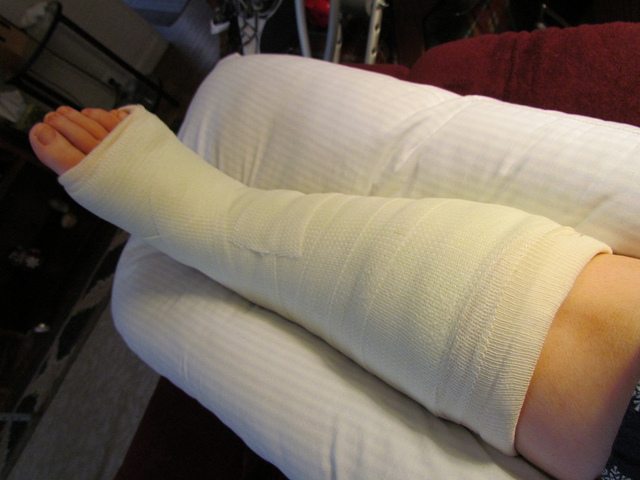8 Nov. 2018. A current drug for leukemia, with a simple protein chemically added, is shown in tests with lab mice to accelerate the healing of broken bones. Results of this study were presented yesterday at a meeting of American Association of Pharmaceutical Scientists, or AAPS, in Washington, D.C.
The study, led by doctoral candidate Mingding Wang at Purdue University in West Lafayette, Indiana, is seeking better treatment options for bone fractures. These fractures affect some 6.3 million people and cost the health care system $28 billion per year in the U.S., according to data cited by the author from National Ambulatory Medical Care Survey and the American Academy of Orthopedic Surgeons. Wang is a doctoral candidate in the lab of Philip Low in Purdue’s Institute for Drug Discovery.
“Even though many broken bones don’t need surgery,” says Wang in an AAPS statement, “most require a prolonged healing process that can lead to morbidity, loss of work productivity, and in some cases even death. By developing a therapy that can accelerate bone fracture repair without damaging healthy bones or tissues, we can hopefully address these critical issues.”
The Purdue team’s solution is to take dasatinib, a drug now used to treat some types of leukemia, a cancer that starts in bone marrow. The drug works by blocking signals from the Src enzyme that promote proliferation of cancer cells. The authors say those same signals interrupt bone healing, and when Src signals are blocked by dasatinib, new bone tissue develops faster.
For bone healing to take place efficiently with dasatinib, however, the drug needs to be targeted to the fracture site. To meet this requirement, Wang and colleagues chemically modified dasatinib by adding a peptide, or short chain of amino acids similar to proteins, called aspartate-10, a form of aspartic acid. In this case, aspartate-10 acts as a homing agent to locate the fracture and deliver dasatinib to the fracture site, which would also limit the chance for adverse side effects.
The researchers tested the altered dasatinib in lab mice with fractures in their femurs or thigh bones. One set of mice were randomly assigned to receive the modified dasatinib with aspartate-10 in daily injections under the skin, or dasatinib alone, or an inert saline solution for comparison. The team also altered the dosing schedule in some mice to give the dasatinib-aspartate treatments every other day instead of daily.
The results show after 3 weeks, mice receiving the dasatinib-aspartate treatments more than doubled (by 114%) the bone density in their fractures compared to those receiving the saline solution. Mice receiving dasatinib alone also showed more bone development, but only about half that of the mice receiving dasatinib-aspartate combination. The dasatinib-aspartate mice also showed denser growth of trabecular tissue, the spongy supporting tissue at the end of the femur bones.
Not all of the findings were encouraging. Mice receiving the daily dose of dasatinib-aspartate exhibited weight loss over the 3 weeks of treatments, which suggests toxicity. The researchers found, however, that mice receiving dasatinib-aspartate every other day rather than daily shows about equal bone density development as the daily dose, but with weight maintenance about the same as mice receiving the saline solution instead of the drug.
Philip Low, director of Purdue’s Institute for Drug Discovery, founded Novosteo Inc., a company developing treatments for bone fractures founded with his son Stewart Low, a postdoctoral researcher in the lab. As reported by Science & Enterprise in September, the company is developing treatments that target the fracture region and accelerate bone regeneration.
More from Science & Enterprise:
- Computer-Aided Bone Graft Process Devised with Stem Cells
- Grants Made to Commercialize Bone, Cancer Research
- Spin-Off Gains FDA Clearance for Bone Graft Material
- Trial Shows Bioactive Glass Stops Bone Infections
- Start-Up Developing Nanotech Bone Repairs
* * *


 RSS - Posts
RSS - Posts
You must be logged in to post a comment.